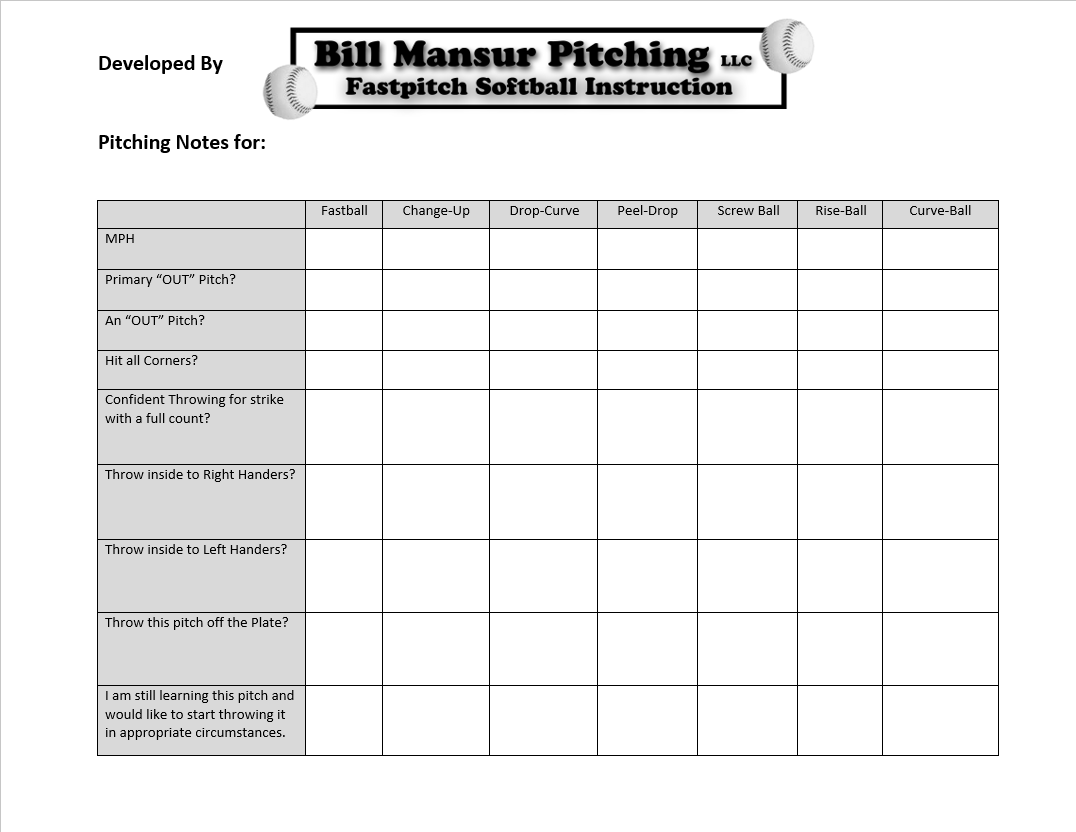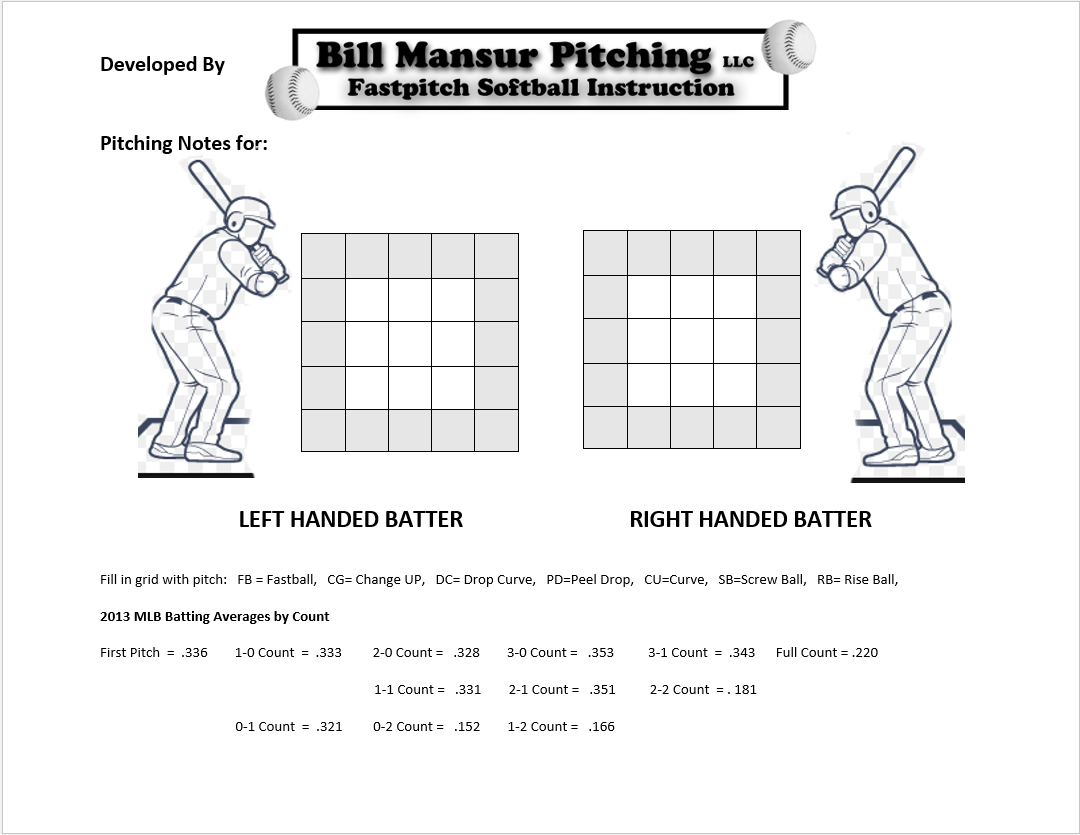


| HOME BILL's BIO TIFFANY's BIO WHAT'S COVERED | ||
|---|---|---|
| SCHEDULE-Pitching EQUIPMENT FOR SALE | ||
| BMP-Pitchers BLOG TRAINING | ||
| TEAM LINKS Cell/Mobile Menu |
Before replacing a pitcher, make sure the incoming pitcher has plenty of time to warm-up. This is usually an inning or two!
A normal warm-up for a summer league game should be a half hour to 45 minutes.
A normal warm-up for a high school game is about 45 minutes to an hour.
A normal warm-up for a college game is 45 minutes to 75 minutes (Kelly Franks, SPASH, St. Cloud State).
These will vary slightly due to the number of different pitches you need to warm-up.
The pitchers at BMP usually warm-up by dong 20 "wrist-flips", "T's" and "K's", then 10-15 "Three Circles" which usually takes about 15 to 20 minute minutes.
This should be reduced to about 10 of each and about 10 minutes total before a game, giving the pitcher more time to throw.
Each pitcher is different and have slightly different warm-up habits. Try to get to know their warm-up routines.


|
Contact Bill today Stevens Point, Plover, Wisconsin Rapids, Mosinee, Marshfield, Stratford, Spencer, Waupaca, Wausau, Westfield, Almond, Almond-Bancroft, Amherst, Antigo, Appleton, Arbor Vitas, Athens, Beloit, Berlin, Birnamwood, Black River Falls, Bowler, Clayton, Coloma, Custer, Deerbrook, Duran, Elk Mound, Fifield, Germantown, Gillett, Granton, Loyal, Greenville, Greenwood, Hayward, Iola, Ironwood, Junction City, Kewaskum, Ladysmith, Loyal, Manawa, Marathon, Mauston, Medford, Merrill, Milladore, Milton, Milwaukee, Mosinee, Munising, Necedah, Nekoosa, New London, Oshkosh, Park Falls, Pembine, Pint River, Pittsville, Plainfield, Pulaski, Reedsburg, Reedsville, Rosholt, Rudolph, Slinger, Three Lakes, Tomah, Tomahawk, Tri-County, Waupaca, Wautoma, Westfield, Weston, Weuyawega, Wild Rose, Wilsonville, Winneconne, Wittenberg. |